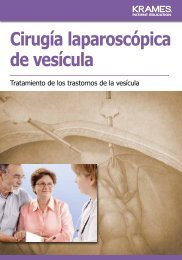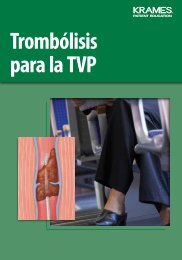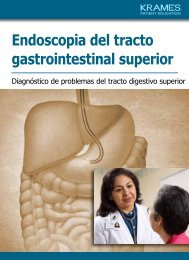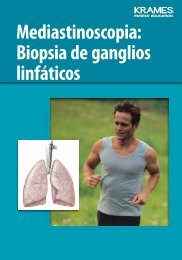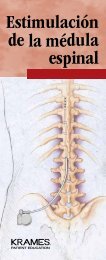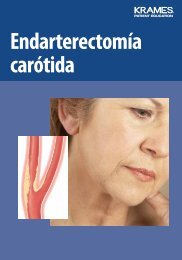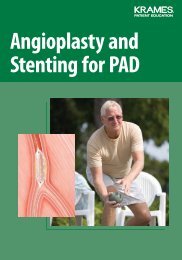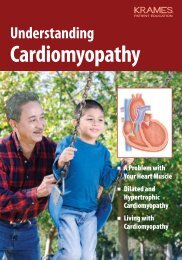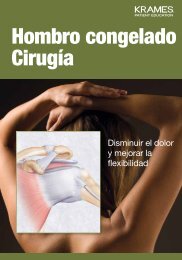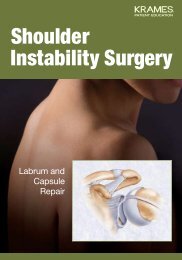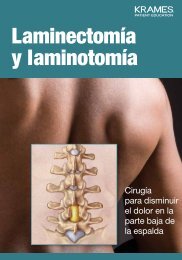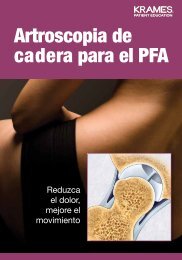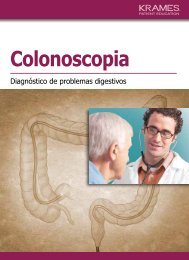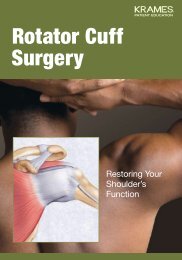Carotid Angioplasty and Stenting - Veterans Health Library
Carotid Angioplasty and Stenting - Veterans Health Library
Carotid Angioplasty and Stenting - Veterans Health Library
You also want an ePaper? Increase the reach of your titles
YUMPU automatically turns print PDFs into web optimized ePapers that Google loves.
Narrowed <strong>Carotid</strong> Arteries<br />
Arteries can become damaged due to risk<br />
factors such as smoking, diabetes, <strong>and</strong><br />
high blood pressure. Heredity (family<br />
history) also makes some people more<br />
prone to artery damage. A damaged artery<br />
no longer has a smooth lining. Cholesterol<br />
<strong>and</strong> other particles in the blood stick to<br />
the artery wall <strong>and</strong> form plaque. A buildup<br />
of plaque leads to stenosis (narrowing<br />
of the artery). This can reduce blood flow.<br />
How Plaque Causes Blockage<br />
The surface of plaque may be rough.<br />
Blood can collect there <strong>and</strong> form clots.<br />
Also, plaque can rupture, causing pieces<br />
to break off <strong>and</strong> enter the bloodstream.<br />
At the same time, rupture can produce<br />
more blood clots. Fragments of plaque<br />
<strong>and</strong> tiny blood clots (emboli) then travel<br />
to <strong>and</strong> block smaller arteries in the brain.<br />
This cuts off blood flow to a portion of<br />
the brain, resulting in a stroke.<br />
Emboli<br />
Damaged<br />
area<br />
Plaque<br />
Narrowed<br />
artery<br />
Blood<br />
clot<br />
Problems with blood flow can occur<br />
when an artery is narrowed by plaque.<br />
Emboli can enter the<br />
bloodstream <strong>and</strong> travel<br />
to the brain.<br />
Brain tissue is damaged<br />
when emboli block<br />
arteries in the brain.<br />
How a Stroke Affects You<br />
When blood flow is cut off, brain tissue<br />
can die, causing loss of brain function.<br />
This results in problems such as difficulty<br />
speaking or controlling movements. The<br />
exact symptoms depend on which part<br />
of the brain is affected. Symptoms often<br />
occur on one side of the body only, the<br />
side opposite the blockage. A stroke does<br />
permanent damage that can cause longlasting<br />
loss of function.<br />
What Is a TIA?<br />
A TIA (transient ischemic attack) is a<br />
temporary episode of stroke-like symptoms.<br />
It is sometimes called a “mini-stroke.”<br />
Having a TIA is a warning that you’re at<br />
high risk of a stroke. TIA symptoms go away<br />
within 24 hours, but otherwise they are<br />
exactly the same as stroke symptoms. If<br />
you have stroke symptoms, don’t waste time<br />
wondering whether you’re having a TIA:<br />
Call 911 right away!<br />
5




